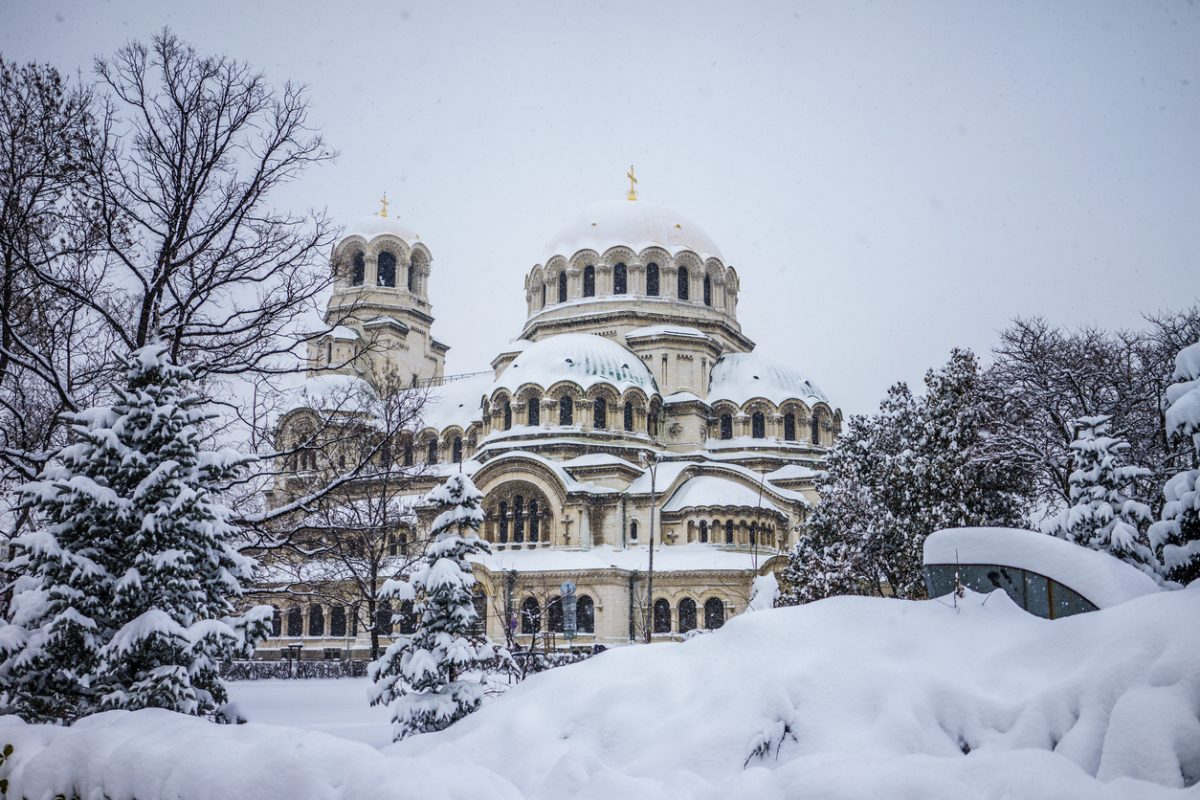Are you visiting Bulgaria in winter? Here’s a list of 12 incredible places to visit and some travel tips!
Also known as the land of roses, Bulgaria is a beautiful country with plenty of winter activities.
It boasts of the best ski resorts in this part of Europe, a popular spa culture, cities with a great winter atmosphere and plenty of indoor attractions making it perfect for all travellers.
Our Balkans writer, Andrej, has been to Bulgaria numerous times in the winter months, for skiing and seeing the rest of the country, and he’s put together his experiences in this article!
What’s Bulgaria like in winter?
With its snow-covered landscapes, charming winter resorts, and rich cultural heritage, Bulgaria’s well worth visiting in winter.
One of the main attractions in Bulgaria during winter is its excellent ski resorts.
Bansko, Borovets, and Pamporovo are popular destinations that offer well-groomed slopes, modern facilities, and a vibrant après-ski scene.
These resorts cater to all levels of skiers and snowboarders, providing a thrilling winter sports experience.
Aside from skiing, Bulgaria’s winter landscape is perfect for activities like snowshoeing, ice climbing, and snowmobiling.
The Rhodope Mountains, in particular, offer breathtaking scenery and opportunities for winter adventure.
Winter in Bulgaria also brings cultural festivities.
The cities and towns come alive with Christmas markets, traditional folklore performances, and celebrations of the Orthodox Christmas.
The capital city, Sofia, comes alive during the festive period, lit up with decorations and with Christmas markets.
Are you searching for a more serene winter experience? Bulgaria’s full of thermal spas and hot springs.
Destinations such as Velingrad and Hisarya offer rejuvenating thermal baths surrounded by picturesque winter scenery.
But what about the weather? Bulgaria does experience cold temperatures and occasional snowfall during winter – and of course, in the mountains, it’s snowy for most of the winter.
So, make sure youpack warm clothing and appropriate winter gear!
What is the weather like in Bulgaria in winter?
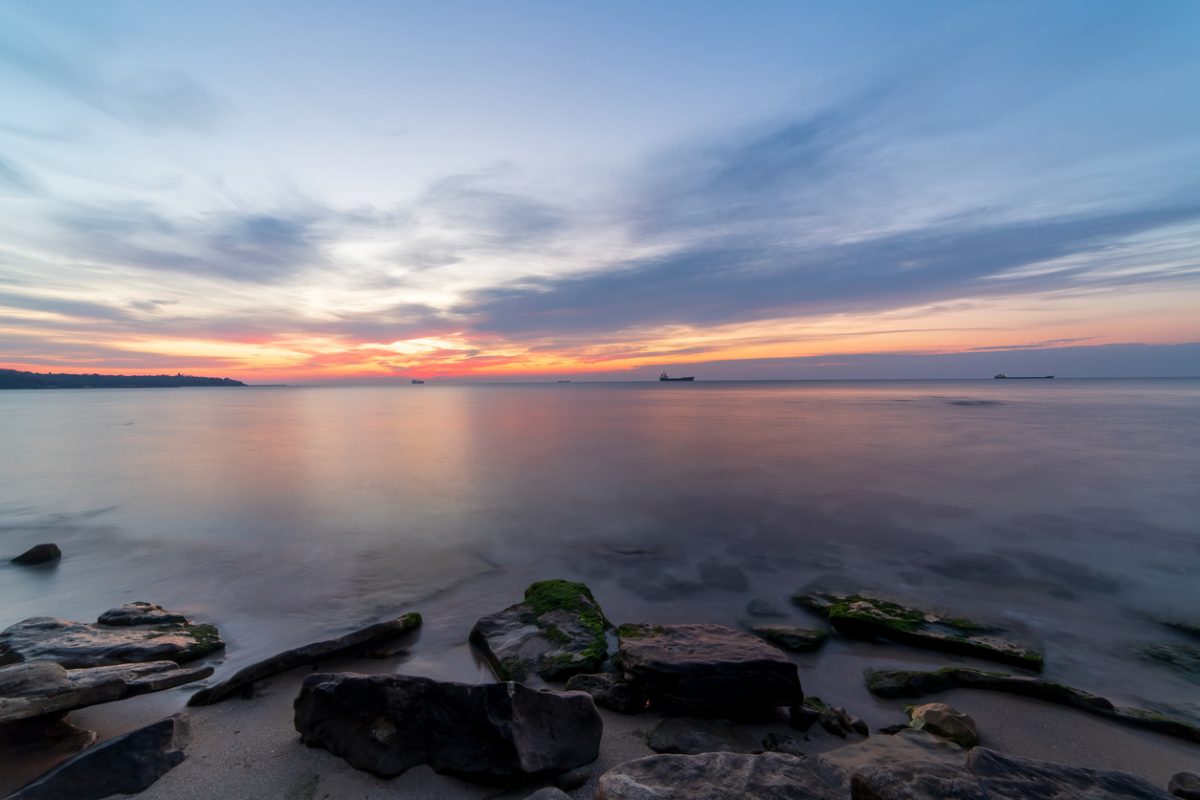
Thanks to its Eastern Europe location, Bulgarian winter with temperatures often dropping under 0 °C, cold wind and snow throughout much of the country.
Of course, the climate differs a lot based on whether you’re staying – mountain ski resorts will be a lot chillier than port cities!
Wherever you’re heading to, make sure to check the weather forecast beforehand to be prepared.
Rain and snow are very frequent during the winter months, with mountains getting snow almost every day.
This isn’t a bad thing – frequent snowfall is great for skiing and it makes some destinations look even more beautiful!
Just don’t forget to bring an umbrella, warm wool socks, cozy snow boots and a thick coat.
Things to do in Bulgaria in winter
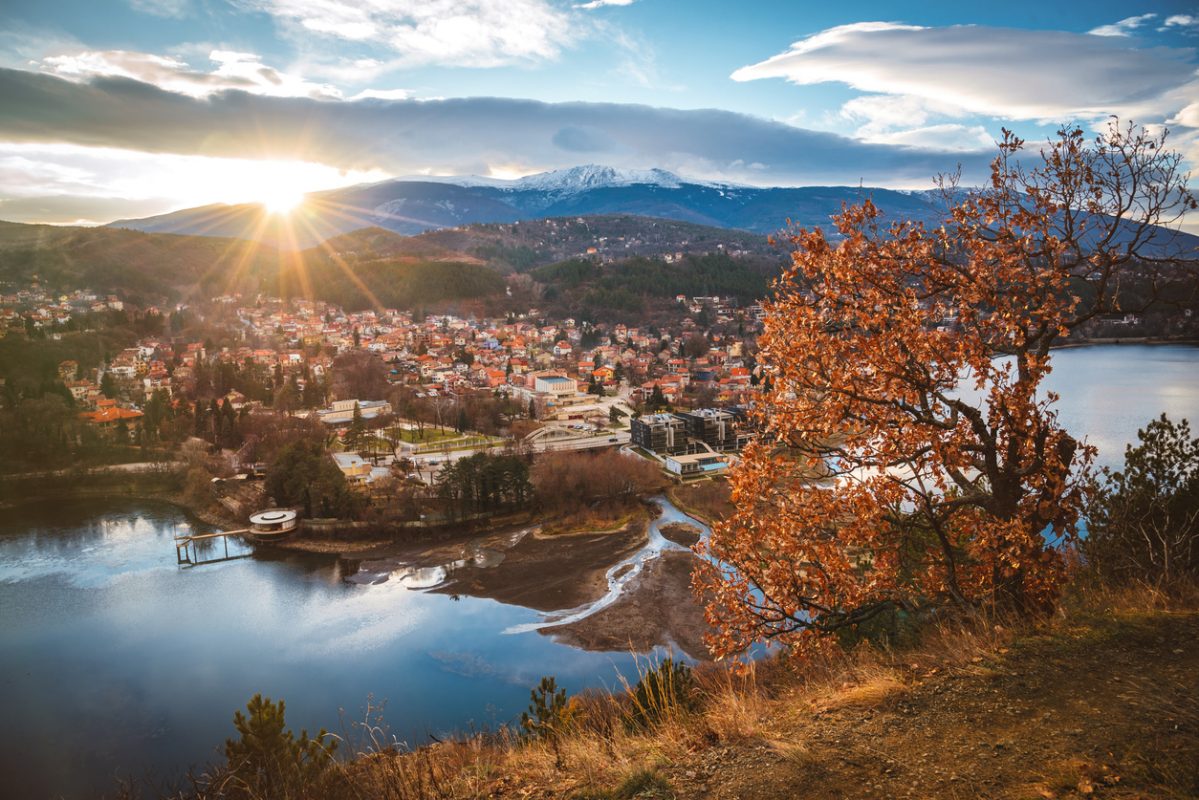
Bulgaria is increasing in popularity as a tourist destination throughout the year. Here are some of the best things to do in the Eastern European nation in winter:
- Skiing: Bulgaria is increasing in popularity as a snow sports destination – and it’s certainly one of the cheapest locations for skiing in Europe!
- Cities: There are so many amazing cities in Bulgaria that showcase the nation’s history and culture through museums and tourist attractions. In winter, they are less crowded and prices are cheaper.
- Nature with less tourism: In Bulgaria in winter, you can enjoy the beauty of the Black Sea and other destinations around the country with much fewer crowds.
- Christmas markets: Sofia, in particular, has wonderful Christmas markets. Bulgaria is a religious country, and they celebrate the festive period in full swing from late November.
Places to visit in Bulgaria in the winter season
The best places to visit in Bulgaria in winter include the capital Sofia, famous snowsports destination Bansko, historic Veliko Taverno, fascinating Koprivshtitsa, Pirin National Park and Varna, located on the Black Sea.
We’ve explained them all in full detail, including why you should visit specifically in the winter, below!
Sofia
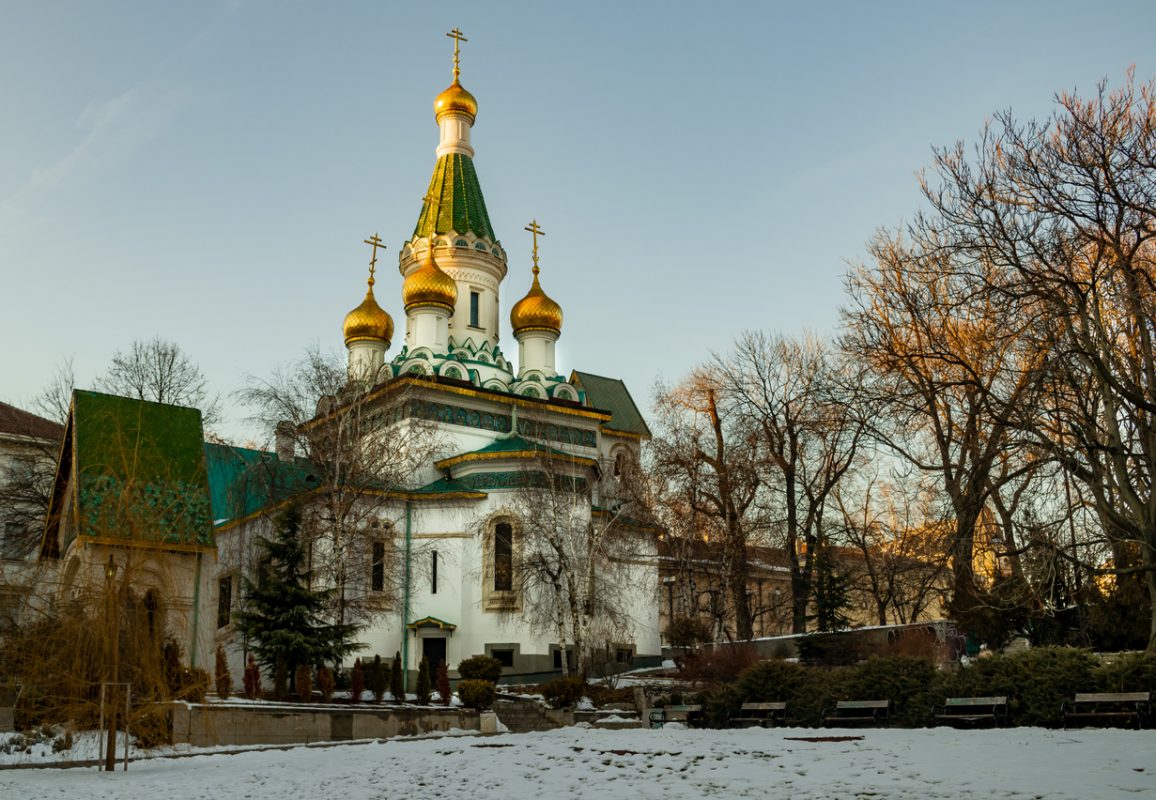
Let’s start in Bulgaria’s capital city, Sofia.
This metropolis has something for everyone, so you’ll love your time time spent here!
Don’t miss St. Nedelya Square in the city centre, which is right next to St. Nedelya Church, a beautiful church that was built back in 10th century.
Nearby, you can also find St. Petka Church and Sofia Synagogue.
If you’re looking for some new clothes or just want to relax with a cup of coffee, Vitosha Boulevard has got you covered. It’s the main street of Sofia and many famous brands have stores here.
After shopping, visit the Doctor’s Garden Park, also in the city centre, and refuel a bit while looking at monuments and beautiful nature.
The weather in Sofia in winter can be chilly, but locals tend to pull on their scarves and winter gloves and take frosty walks outside in the city anwhay!
Rila Mountain
The highest mountain in Bulgaria, and in this part of the Balkans, Rila is a great choice for nature lovers and skiers.
With a great ski resort that can accommodate any level of skier, the Rila Mountains also boast hiking trails and mountain climbing routes.
If you’re only looking for a relaxing holiday, head to the city center of the Rila Mountains. This is right next to the ski slopes and is filled with phenomenal hotels and restaurants serving up Bulgaria’s traditional cuisine.
Whether you’re a nature lover, snowsports enthusiast or just want a holiday in a beautiful place, don’t miss Rila Mountains!
Veliko Tarnovo
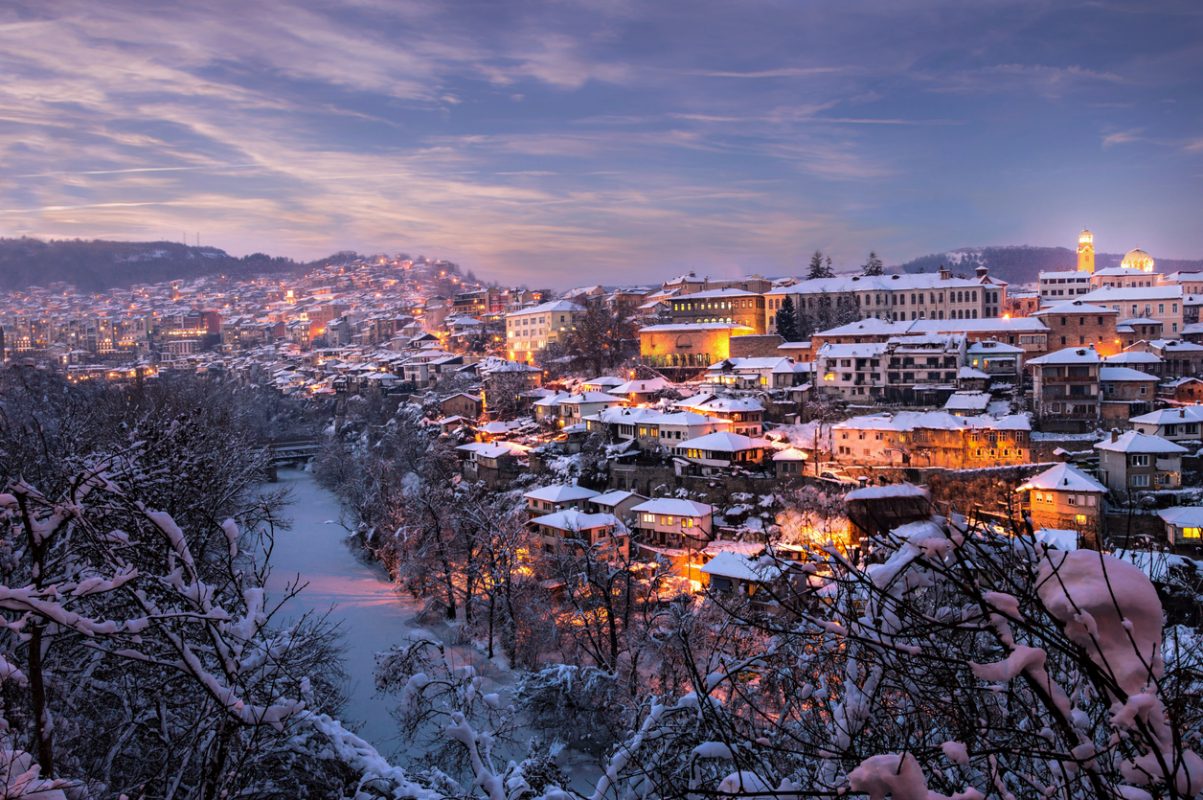
Also known as “The city of Tsars”, Veliko Tarnovo is a wonderful location for anyone interested in history and archaeology.
It was the capital city of the Second Bulgarian Empire, so there are a lot of buildings and monuments left from that time.
Most famous is the Tsaravets fortress, which was the home of Bulgarian royalty in the 12th and 13th centuries.
Just a few kilometers from Veliko Tarnovo lies the historic town of Arbanasi which you can visit for free anytime – it’s open all year round.
You can also go see the Buzludzha, a communist monument that was built in the 19th century at the place of the battle between Turks and Bulgarians. It’s a 1.5 hour drive from Veliko Tarnovo, but is worth it if you’re a history enthusiast.
Bansko
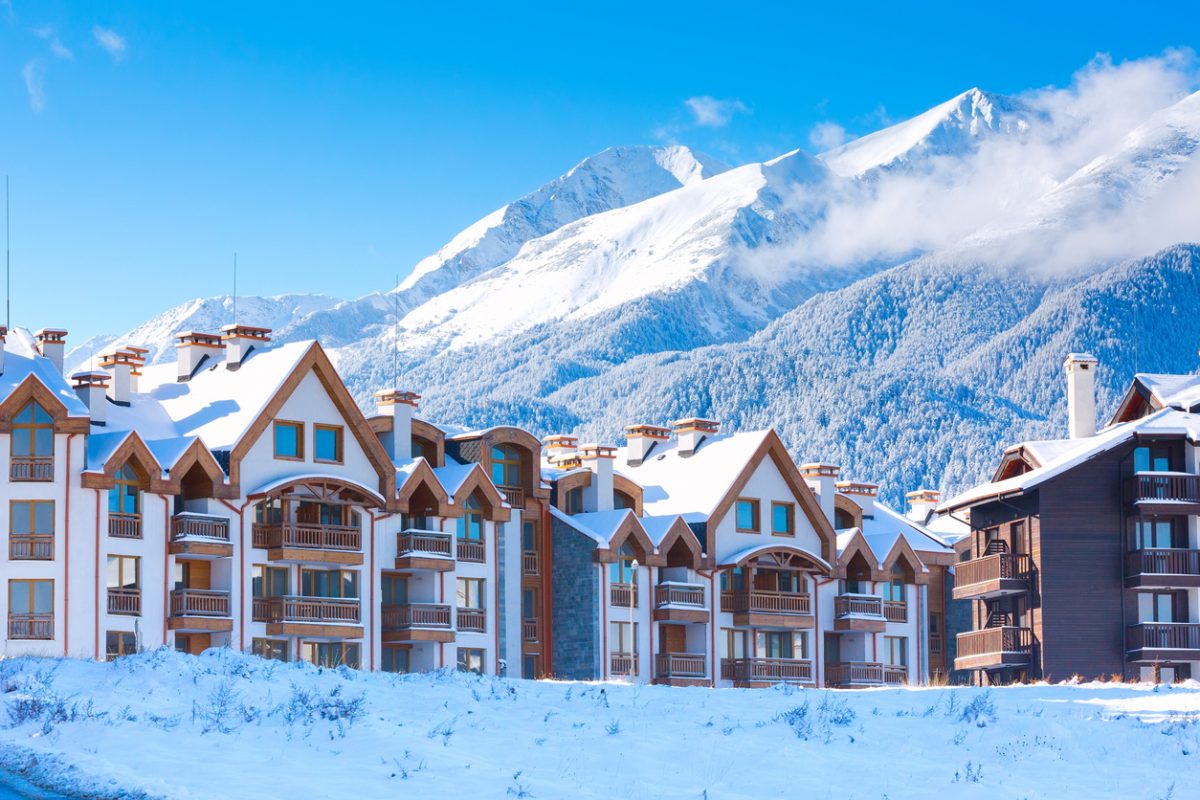
Bansko is one of Bulgaria’s best winter resorts. Its ski resort is one of the biggest in this part of Europe and has slopes of all different difficulty levels to make sure all skiers can enjoy their time there.
The ski season lasts from mid-December to mid-April (although visit before March for guaranteed snow cover).
Once you’ve enjoyed the many winter sports on offer, also worth visiting Bansko city itself.
A pedestrian-friendly city, most of Bansko is a walking zone filled with parks, cafes, and restaurants.
It also has plenty of hot spring resorts which make for a perfect combination with skiing – and are the ideal place to warm up in.
As winter travel experts, we know that there’s no better feeling than laying in the hot jacuzzi after a long, tiresome day in the snow!
Vitosha Mountain
If you’re visiting Sofia or traveling nearby, be sure to stop at Vitosha Mountain.
It’s the oldest national park in the Balkans and the most visited mountain in Bulgaria.
During winter it also acts as a ski resort, although it’s a smaller than others in Bulgaria.
You can experience the true beauty of Vitosha by hiking. It’s a fantastic hiking destination, as the trails are very wide and there’s plenty of space to get lost!
Transport to Vitosha from Sofia is also very cheap so it’s an easy way to get away from the big city and enjoy nature at its finest.
Pamporovo
Pamporovo is another fantastic choice if you’re looking for a ski resort in Bulgaria, especially if it’s a family trip.
With slopes of all different difficulties, Pamporovo is ideal for groups with beginners and experienced skiers.
It even has a 5km long green slope – ideal for beginners!
It doesn’t have much nightlife when compared to other ski resorts in the Balkans, so you’ll have a lovely relaxing stay here.
However, the slopes have a variety of different restaurants and cafes, perfect for taking a much-needed skiing break!
Koprivshtitsa
Do you want to experience the spirit of Bulgaria and its people in just one destination? Head to Koprivshtitsa!
Most of its buildings and houses date back to the 19th century, during the period known as the Bulgarian Revival.
It also has a couple of churches and museums which are open in winter and demonstrate Ottoman Bulgaria.
If you’d like to see all of Koprivshtitsa in one day, you can take an old-fashioned carriage ride and experience the city the way its predecessors have.
Pirin National Park
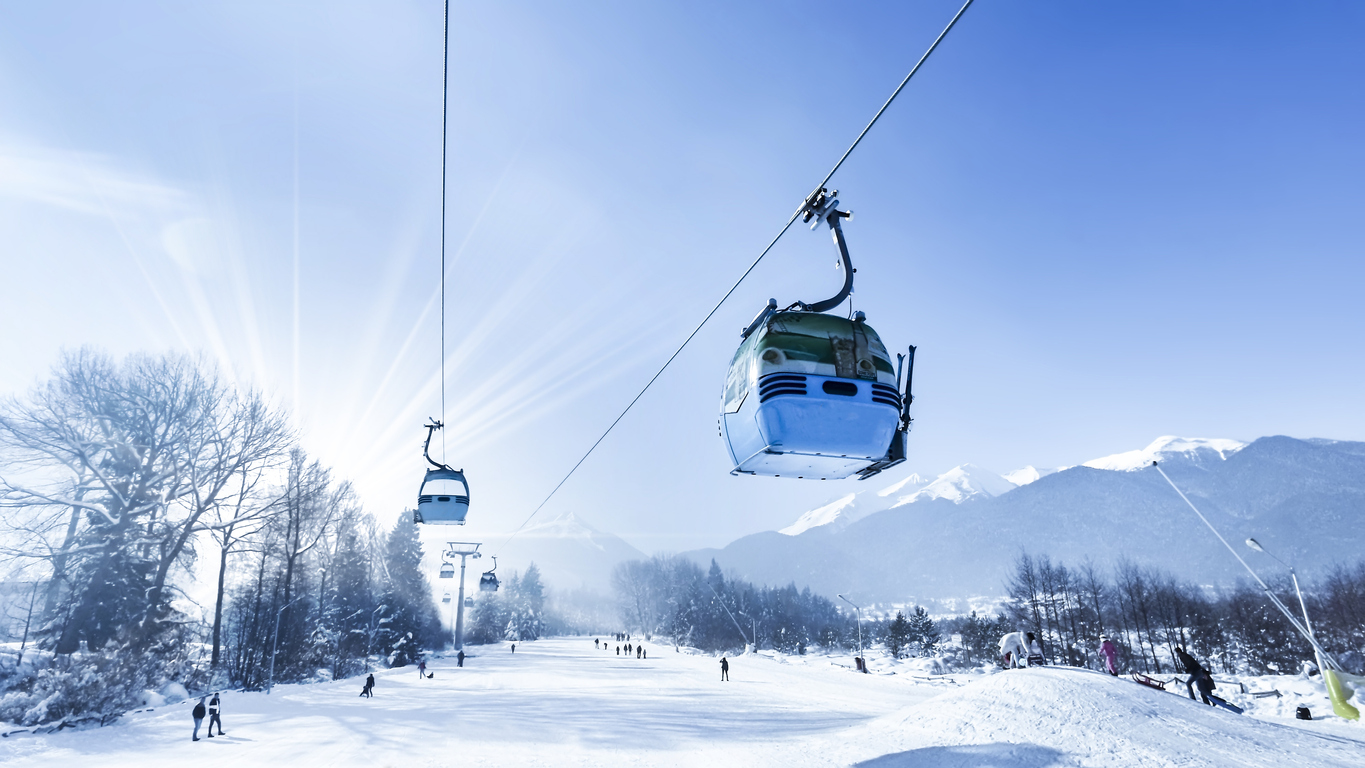
We’ve already mentioned Bansko and all its beauties, but let’s go one step further and visit the Pirin National Park, which Bansko is a part of.
A gigantic national park with diverse nature and beautiful vistas offers you everything from glassy lakes to Pirin mountain and all in between.
Let’s start with it its two most popular waterfalls, Skakaloto and Popina Luka. Skakaloto is a bit harder to reach but is worth the trek – it’s a glorious winter hike.
On the other hand, Popina Luka is close to the cities of Bansko and Sandanski so it’s a must-visit if you’re staying there!
Other attractions include Popovo Lake considered one of the most beautiful places in the whole of Bulgaria, with clear water and a magnificent landscape.
But the main thing to experience is the panorama of Bezbog, with visibility reaching over 10km during clear weather.
During the winter months, there’s deep snow in some parts of Pirin National Park. Make sure that you pack your winter hiking boots and seek local advice before beginning these hikes!
Varna
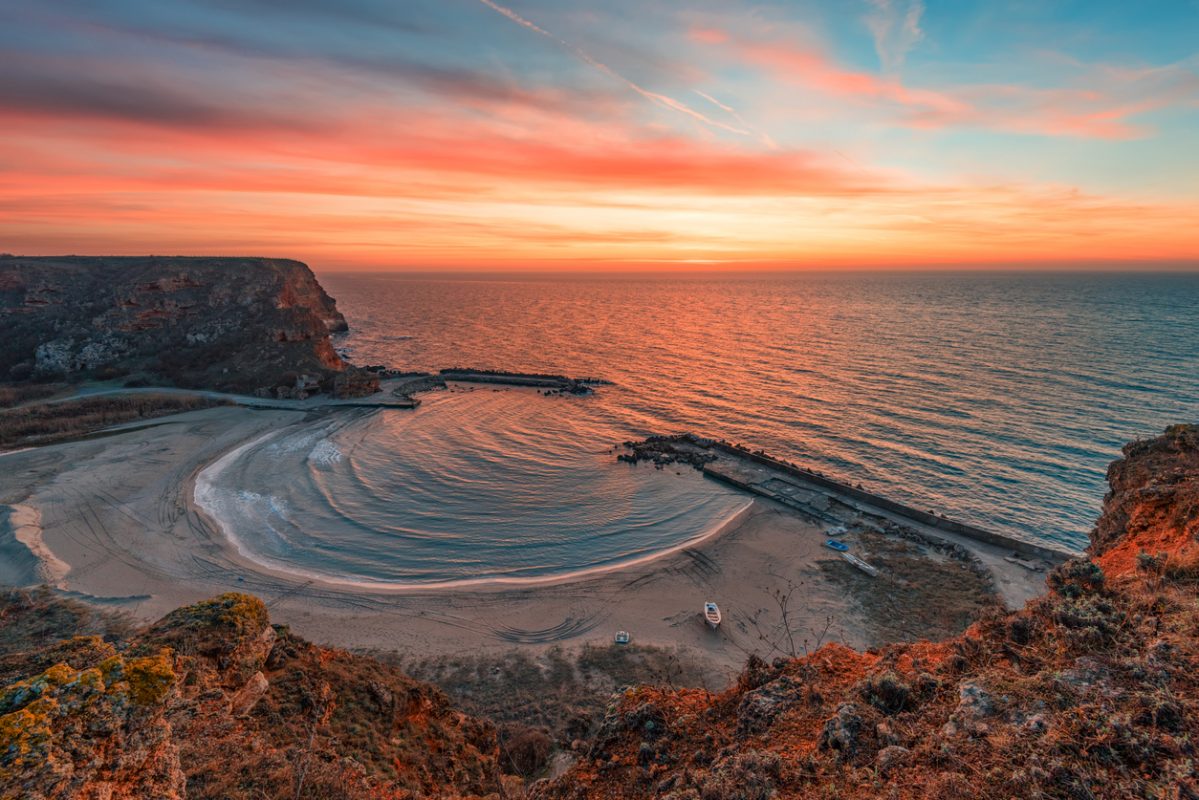
Although primarily a summer spot due to its location by the Black Sea, Varna can also be a great winter destination thanks to its many monuments and natural beauties.
Start by visiting the Varna Cathedral, a majestic church built in the 19th century and arguably the city’s best sight. Then go to the Retro Museum, which takes you back to socialist times and how the country looked back then.
If you’re there for the natural phenomena, visit the Stone Forest and the Wonderful Rocks. Also, don’t miss Varna Romas Baths.
The Sea Garden is also a popular tourist destination and is open in winter (?). It’s packed with everything from restaurants, cafes, walking trails, casinos, and even a zoo – so it’s excellent for family trips with children!
Plovdiv
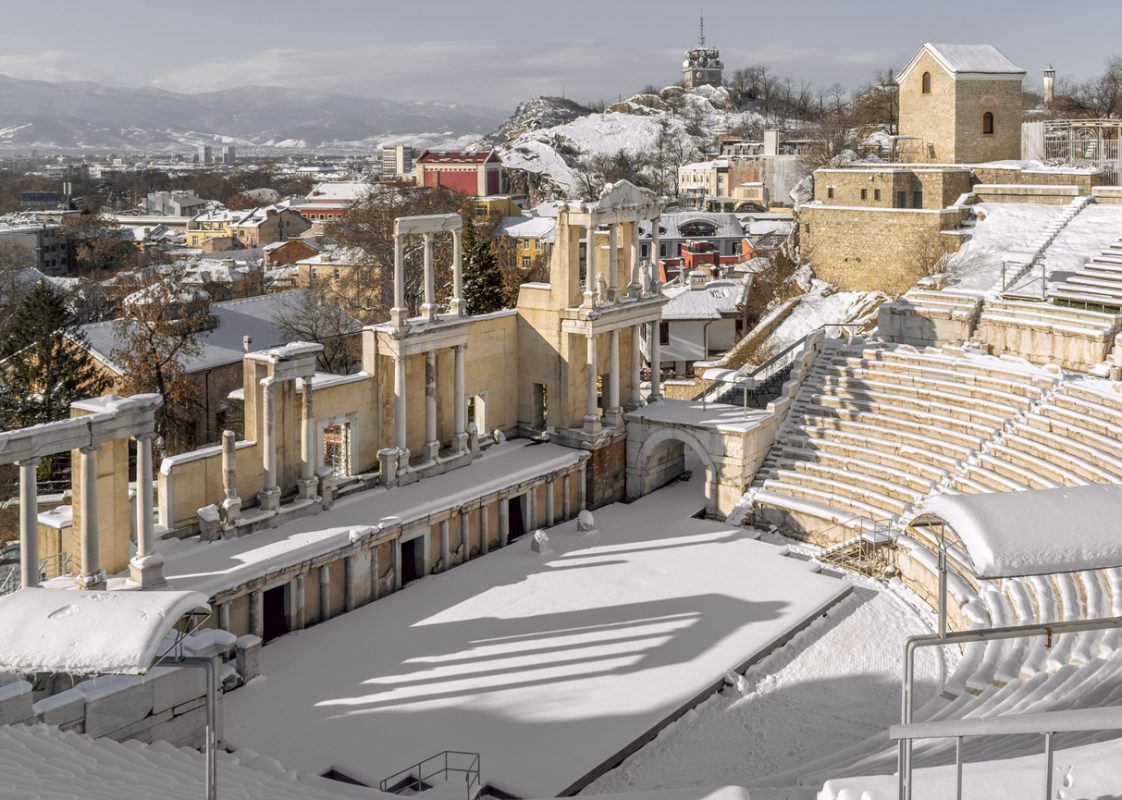
Believed by many to be one of the oldest cities in Europe, Plovdiv is bursting with history. It’s been inhabited for more than 8000 years, so you’ll find a lot of Roman monuments still standing from then.
Some include Plovdiv Roman Stadium and Ancient Philippopolis, which served as the stadium and a forum during the Roman Empire. All of these are open during the winter months!
You can also take a walk through Plovdiv Old Town, where you can find traditional Plodiv architecture combined with Roman ruins.
It’s also worth visiting Bachkovo Monastery, Dzumaya Mosque and the Church of St. Konstantin and Elena.
Or, if you decide to take a break from monuments and archaeological sites, Plovdiv Aviation Museum is also well worth a visit.
Sandanski
If you want somewhere that’s slightly warmer on your Bulgarian trip, head to Sandanski.
Now, it’s not going to be really warm here – Sandanski isn’t a winter sun destination – but thanks to its proximity to Greece, Sandanski has a milder climate than most other locations in Bulgaria.
It’s a beautiful area, with wineries, waterfalls and gorgeous national parks. Don’t miss the popular Popinolashki Waterfall and Еpiscopal Basilica.
Of course, you’re so close to the Greek border that you can also hop over and see places like Thessaloniki as well!
How to get to Bulgaria

Most tourists land in Sofia International Airport. This airport has good connections to Europe, with budget-friendly flights to destinations like UK and Italy.
There are a few other international airports in the country, but Sofia Airport is by far the most well-connected.
You can also enter Bulgaria by road and rail. It has land borders with Romania, Serbia, North Macedonia, Greece and Turkey, and you can cross from any of these countries (there are good rail links between Turkey, Romania and Greece).
FlixBus is my favourite coach carrier in Europe.
How to get around Bulgaria in winter
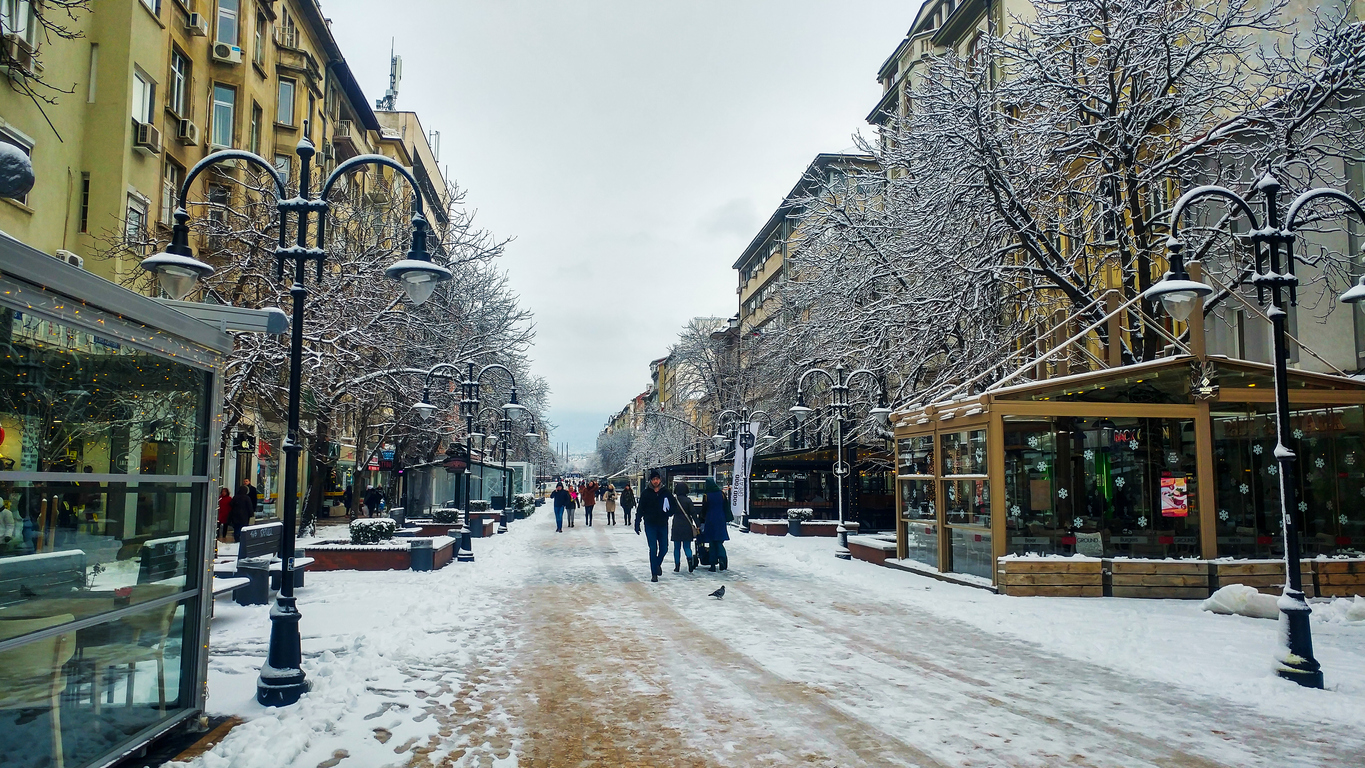
Bulgaria’s transportation system is excellent, with buses and trains running the length of the country.
There are bus lines which connect all of the popular tourist destinations with bigger cities, and they are usually quite reliable. You can book your tickets online or in person and they are fairly cheap compared to other options.
If you’d like to have a more comfortable ride, renting a car or hiring a car driver can also be good options, albeit more expensive. The roads which lead to tourist attractions are regularly taken care of and de-iced in winter, so driving around is generally safe!
What to pack for Bulgaria in winter
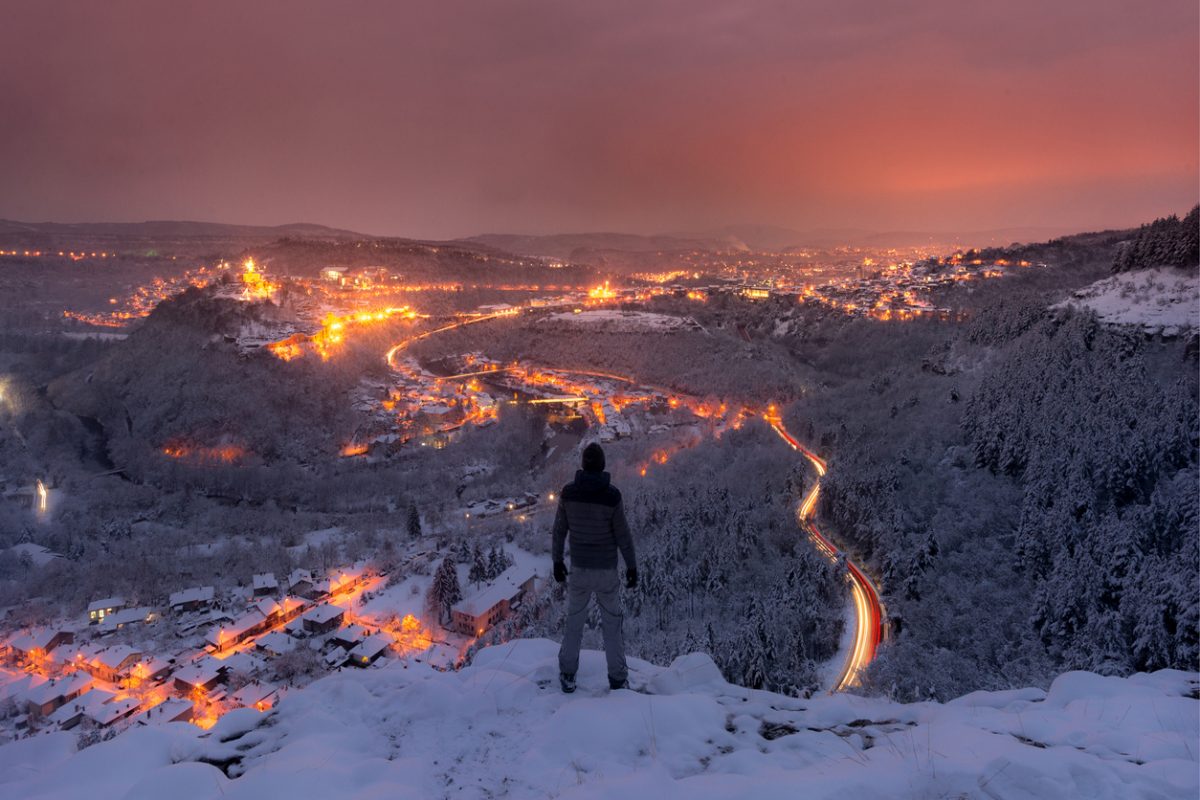
As already mentioned, Bulgaria can get quite cold during winter, so bring some warm clothes!
Sweaters, thick pants, and a pair of boots should be in your suitcase, as well as a winter jacket to protect you from snow and rain.
Of course, if you’re a skier or a snowboarder bringing your equipment is advised, but not necessary, as there are a lot of ski rentals in whichever ski resort you plan on staying.
Prices are also a lot cheaper compared to the Alps or US ski centres.
What to eat and drink in Bulgaria in the winter months
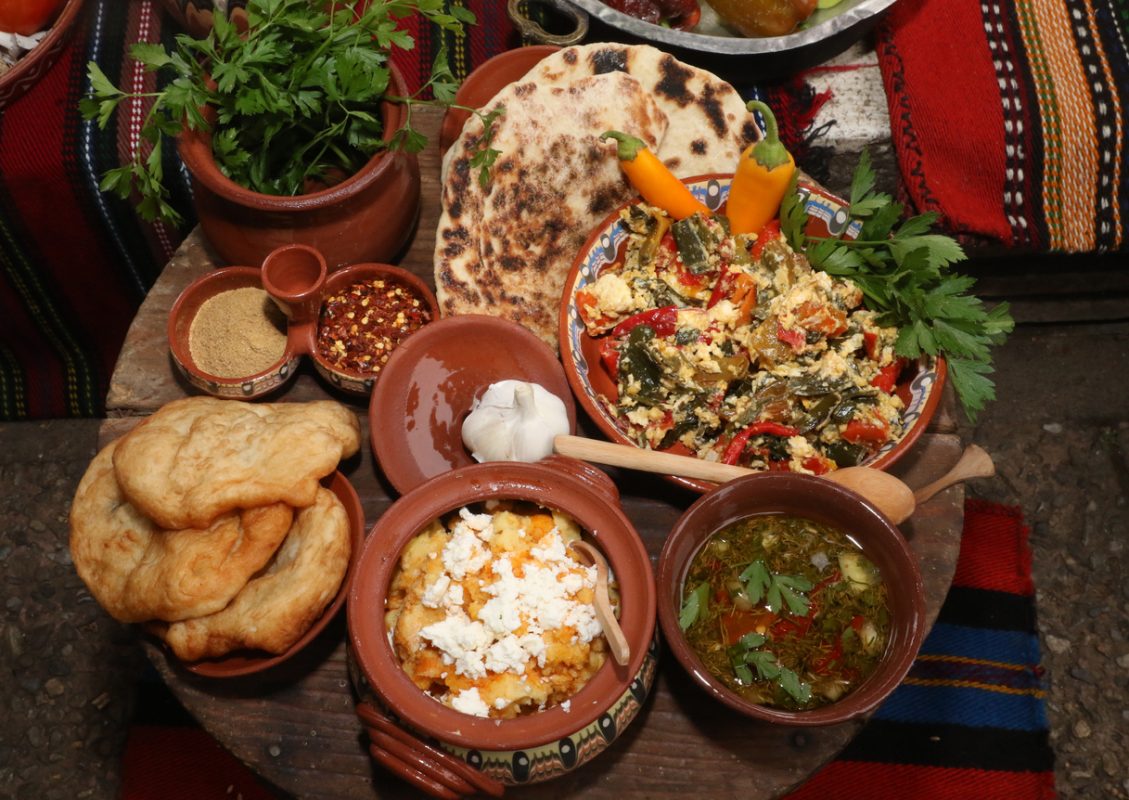
Bulgarian cuisine is one of the main reasons tourists visit the country, and its winter specialities are even heartier than in the summer!
It’s very diverse and is great for both meat eaters and vegans.
If you belong to the first group, culinary specialities include kebabche and bob s nadenica (beans with sausage) a try, and make sure to get triple soup as your appetizer.
For breakfast, banitsa is one of the favorite food of all Bulgarians. And when it comes to drinks, red wine should be your main choice.
On the other hand, if you’re vegan, it’s a bit harder to find completely vegan restaurants, but individual vegan dishes are a staple.
When you’re staying in Sofia, be sure to visit Sunmoon Bakery. It’s one of the few entirely vegan restaurants and is regarded as the best one in the country.
It has many great dishes like lutenica, bob chorba, and kyopoolu, and the prices are incredibly cheap compared to regular restaurants.
Bulgaria in winter FAQs
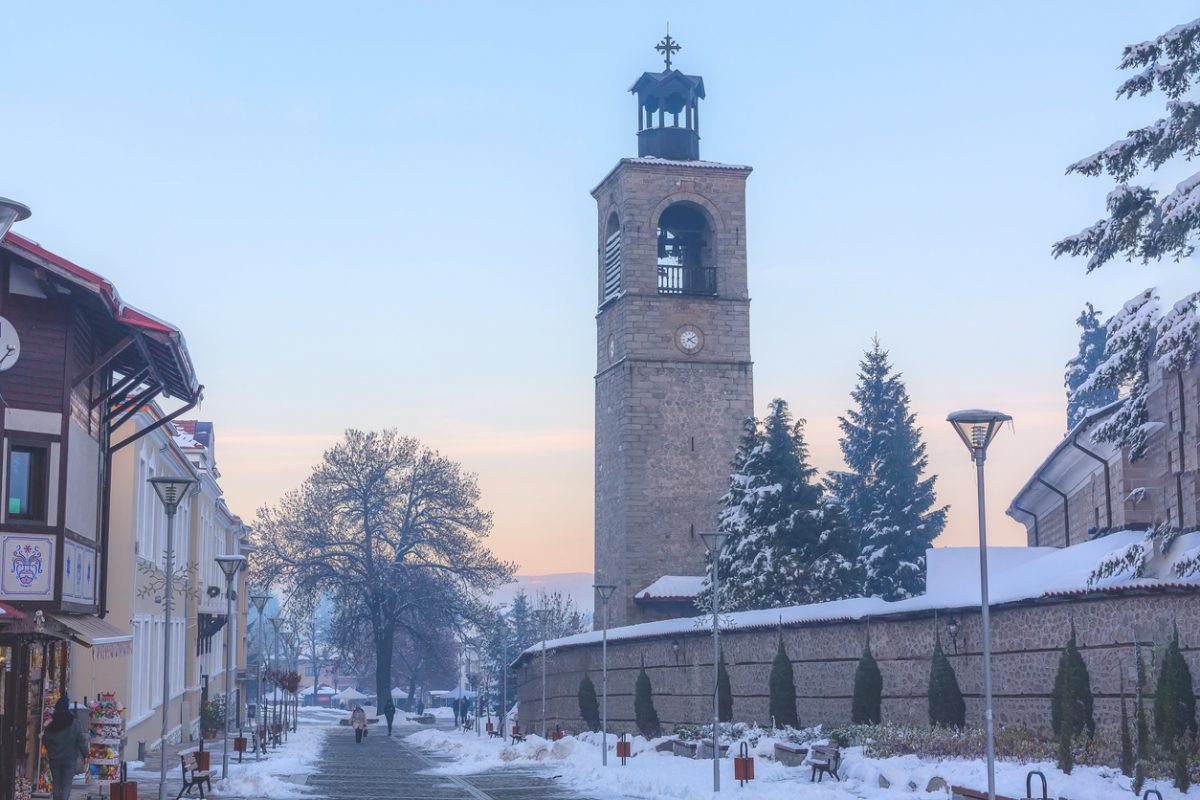
What is the warmest region in Bulgaria in winter?
Sandanski is usually considered the warmest region, with a Mediterranean-like climate. It’s where a lot of people spend the Bulgaria winter months if they have health conditions that don’t do well in the cold. However, this isn’t a winter sun destination – temperatures usually hover between 4°C-8°C degrees.
How cold does Bulgaria get in winter?
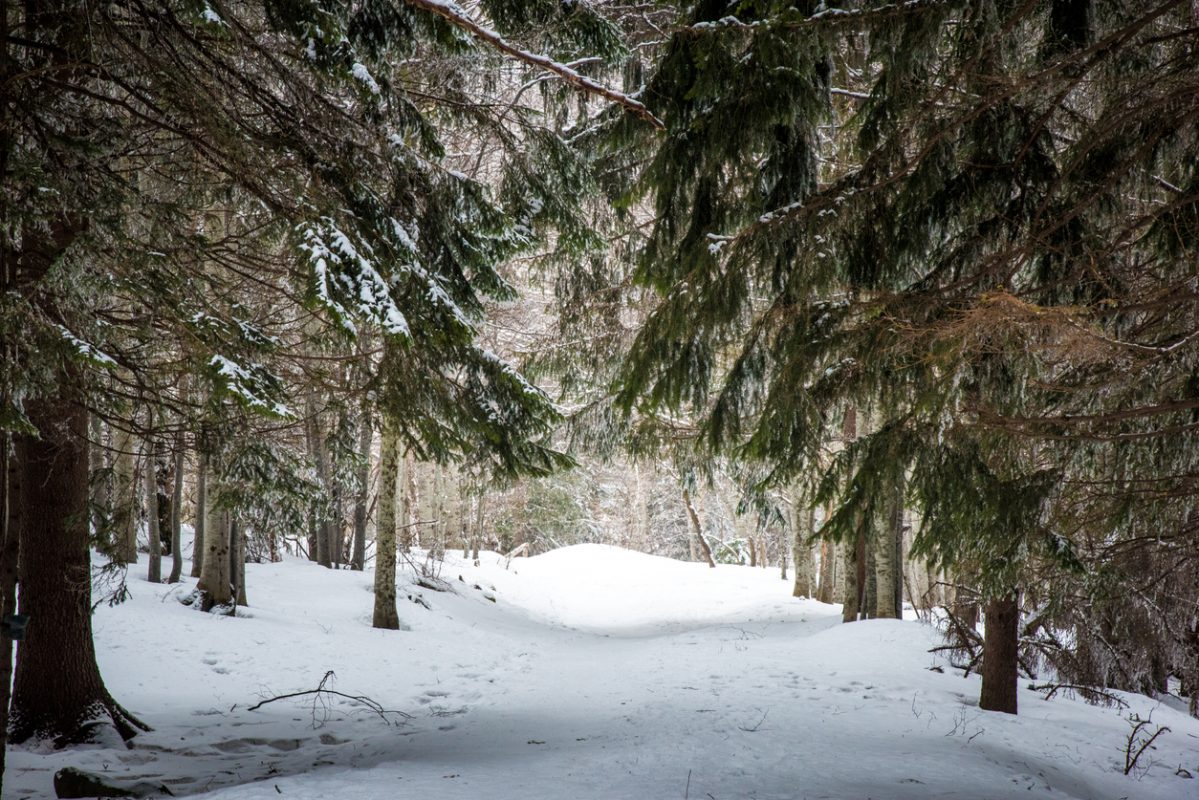
In most cities, -5 °C/ 23 °F can be quite common. However, in mountainous areas and ski resorts, it can be much colder.
Does it snow in Bulgaria?
Of course! It snows in most parts of Bulgaria.
Do they celebrate Christmas in Bulgaria?
Yes, Bulgarians are Eastern Orthodox and celebrate Christmas.
But unlike other Orthodox countries, they celebrate on 25th December as they follow the Gregorian calendar.
Cities like Sofia and Veliko Tarnovo are wonderfully festive throughout December!

How hot is Bulgaria in January?
Not very! Expect sub-zero temperatures across most of the nation.
When should I go to Bulgaria?
It depends on what you’re after!
We think that Bulgaria in December is magical, especially around Christmas.
Plus, it’s an excellent skiing destination. It’s certainly not the warmest time to visit Bulgaria – but there are so many fun winter activities that that shouldn’t matter.
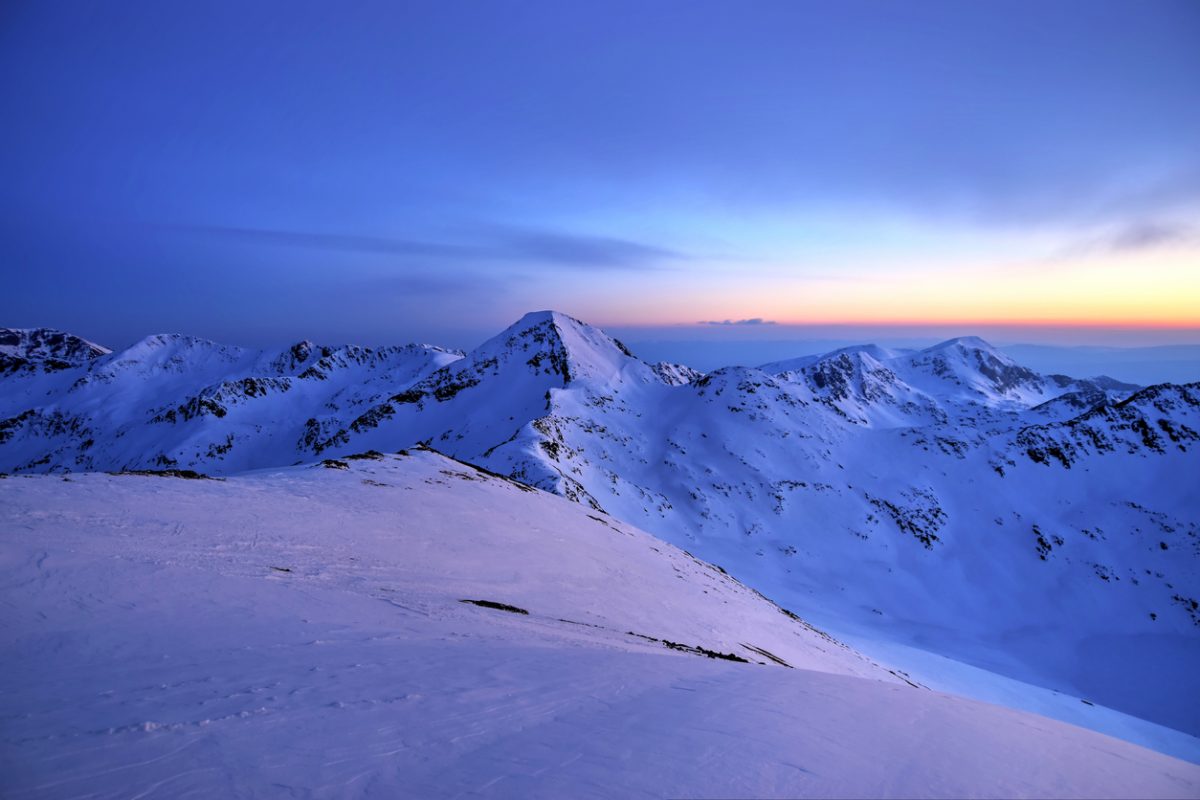
Whether you’re getting into the Christmas spirit in Sofia, learning about history at Veliko Tarnovo, trying out winter sports at Rila Mountain or trying all of Bulgaria’s culinary specialities, you’ll love this Eastern European nation in the cooler months.

